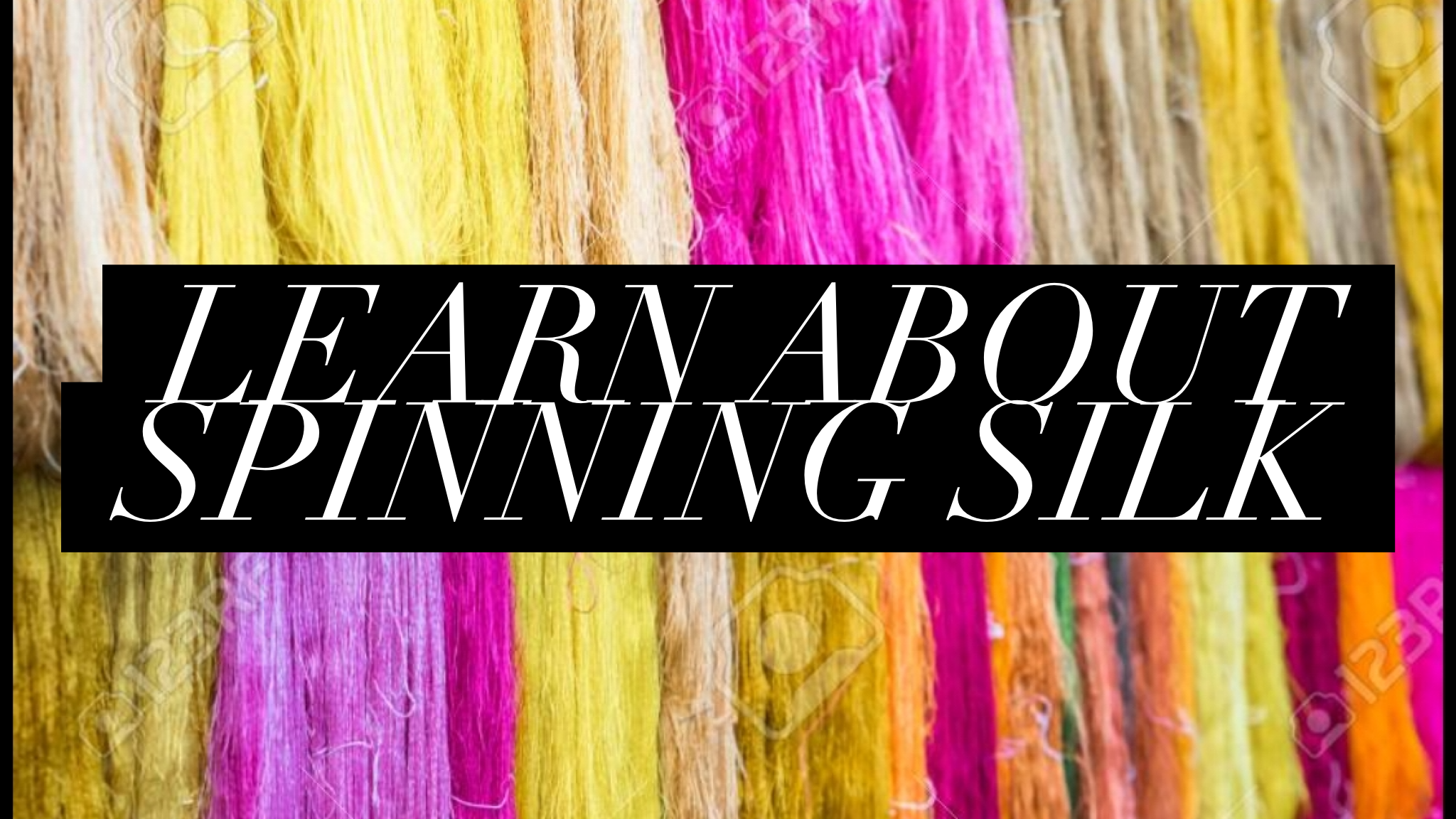Silk : The Surprisingly Versatile Fiber
Written and Designed by Brittany of @Bee _ Ritt _ Fiber_ Arts on Instagram Please follow her for more inspiration and creativity with the fiber arts. You can even buy some of her gorgeous art yarn weavings at her Website .
When you think of spinning silk, what comes to mind? I think most would probably answer with silk top and sari silk; however, silk actually comes in a multitude of varieties and preparations; all of which require a different method of spinning.
I first started thinking about silk when I received a rather large quantity of Tussah silk top in a mystery grab bag. I noted that it had quite a bit of vegetable matter, which was at first surprising to me. Silk worms aren't woolly critters that roll around in hay. Why is there any vegetable matter at all? What does the matter consist of? It was then that I began researching silk to find out why.
There are two main ways in which raw silk is harvested: cultivated silk (which has a greater amount of quality control) and wild silk. Tussah is a wild variety, and suddenly the vegetable matter began to make a little sense to me. Silk farmers forage for the already hatched cocoons among plants and trees. This type of silk is considered one of the most ethical varieties as the silk worms and moths are able to live out their life cycle in freedom and unhindered by the farmers. However, because the silkworms' diets and environments aren't controlled, the quality of the cocoon fibers is not as desirable as that of cultivated silks. It does not take dyes as well and is often full of different staple lengths and noils. Other varieties of wild silk include Muga and Eri silks. Cultivated silk varieties are much easier to control quality wise and are also known as Bombyx or Mulberry silks (because their diets consist of white mulberry leaves).
All spinnable silk has the same start: cocoons, either cut or hatched. The cocoons must be degummed, at which point they often become thin layered sheets called 'silk hankies'. Silk hankies themselves are quite versatile! Non spinners can even utilize them as they can be knit (or even crocheted if you are feeling rather adventurous) straight from the hankies. Or you can separate the hankies and spin fine silk threads. And recently I learned from watching a video by Suzy Brown on YouTube that you can use silk hankies to wrap textured art yarns in plying, giving your yarns a unique silk glazed effect.
Alternative to silk hankies, degummed cocoons can also be left in cloud form (think angora), called soff silk. Soff silk can be dyed and used in blending to add elements of texture.
Silk can also be prepared as combed top, which removes most (if not all) of the noil, making it perfect to spin as is, or easily blend with other fibers to give them strength and sheen. Different varieties of silk prefer to be spun differently even when prepared the same way though. I recently spun silk tops that were tussah silk and mulberry silk. The tussah silk top was best spun from the fold, which is just breaking off chunks and allowing the fibers to spin the way they want. This is because tussah silk, even as a combed top, still has uneven staple lengths which don't want to draft the same. The Mulberry silk top, on the other hand, was easily broken down into strips and spun into a very even yarn right from the strips.
Silk preparations become even more varied when you add in recycled sari silks. Recycled sari silk is exactly what it sounds like: the recycled scraps of sarees from India. The sari is a staple of Indian dress and culture. As they become worn out, instead of contributing to the massive waste of textiles in landfills, they can be recycled. Sometimes they are cut into thin strips and sewn together as ribbon, but they can also be shredded into threads. These threads can be combined with unspun silk into sari silk roving or can be blended with other fibers or spun on their own. It would really be another blog post entirely to cover the uses and preparations of sari silks, so I will not go further on them in this post.
If you're interested in learning more about silk, the different varieties, preparations and methods of spinning, one resource that is a good starting place and that I found invaluable is Silk: The Practical Spinner's Guide by Sara Lamb.



